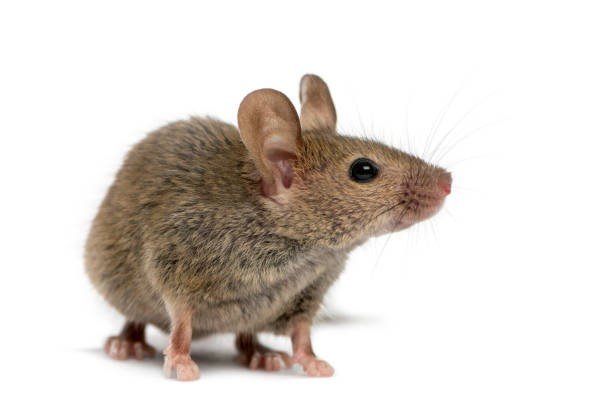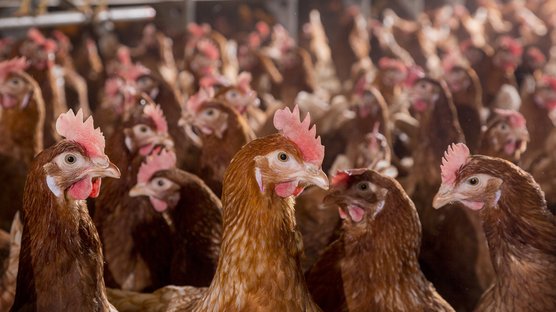
Published on July 28, 2020
Rodent control
Rodents, such as mice and rats, can be a major cost factor on the poultry farm because of the food that they eat or spoil with feces and urine, the damage they do to the housing and equipment with an increased risk of barn fires. Further, the diseases they may carry (like Salmonella spp.) can result in flock health problems and public health problems, as the products produced on the farm can be contaminated.
Did you know that an entire flock can be contaminated by the presence of just one infected rodent? Imagine the risk this poses to the rest of the egg food chain. Besides the danger of infection, rodents can cause serious damage to buildings and equipment, especially to water lines, electrical cables and insulation panels. Damage to electric cables can lead to short circuits and are often the cause of fires and electrical failures. For these reasons, an effective rodent control program is essential, as it will promote the health and welfare of your flock, as well as protecting your egg income.
In order to set up an effective rodent control program, you need to know with whom you are dealing. For example, rats are intelligent and social animals that can live in colonies of up to one hundred individuals. Rats have a strong tendency to burrow, especially into soil or under secure coverings such as piles of stones or rubbish - and they prefer to move under cover of darkness. Because of their agility and their ability to squeeze through small openings, it is very difficult to keep them out of your poultry houses and feed storage. Rats breed very quickly, with one pair and their offspring being able to produce up to 500 young in 9 months! Another example is mice, did you know that they can reach sexual maturity 42 days after birth? As a result, mice populations can grow extremely fast. Due to their small size, it is easy to carry them along unnoticed into your barns. They can enter a building through gaps smaller than 1 cm.
Rats do most of their eating at night, usually taking a meal in the early part of the night and another towards morning. They are seldom active during the day, and it is this habit that allows a population to develop before they are noticed. If a single rat is seen during daytime, there is already a sizeable infestation. Farm staff should check at night for rats, particularly when the lights in the house are out. To control rodents requires constant attention!
Damage to your birds
Rodents not only physically damage the building structures and equipment, but they can also break and eat eggs and kill young chicks. Rodents are also major carriers and reservoirs of poultry and zoonotic pathogens, including Salmonella typhimurium, Salmonella enteritidis and infectious bursal disease viruses.
After thorough cleaning and disinfection of a poultry house, mouse populations can remain infected with bacteria and viruses that can infect the next flock for up to 10 months! Rodents also carry parasites such as mites, lice and fleas. In addition, rodents cause general nuisance for birds in the house due to their noise and movements. The birds may be frightened, which results in poor performance or accidents resulting in deaths.
Controlling a rodent problem
The cost of controlling rodents is small compared to the losses incurred through rodent infestation. It has generally been observed that preventative actions against rodent infestations are rarely as vigorous as the problem demands.
An effective rodent control program involves 7 areas of activity:
- Minimizing points of access into the poultry houses. Cracks and openings into the barns should be sealed with a material that cannot be gnawed by rodents, such as sheet metal, hardware cloth or cement.
- Preventing access to feed, water, and shelter, i.e. do not attract rodents.
- Elimination of nesting places. Make sure any material that would be attractive to rodents for nesting is placed in rodent proof storage areas. If the storage area cannot be rodent proofed, move the material at least every week to prevent rodents from establishing themselves in it. Place all bagged food and equipment on a platform about 60 centimeters off the ground and 60 centimeters from any wall. Always keep the building surrounds tidy and well mown. A heavy grass and weed growth around a stack of undisturbed timber or other material or equipment makes an ideal nesting site. Outdoor burrows may be closed by filling with soil and observed for reopening of entrances.
- Appropriate sanitation conditions, including: tidying the shed inside by removing items that do not belong there and keeping strips near walls clear; regular cleaning by sweeping and removing all spilt feed, dead birds and broken eggs; checking incoming and outgoing materials for infestation; and, after every round of production clearing the entire shed and cleaning it out thoroughly.
- Baiting and/or trapping programs.
- Monitoring of rodent populations, look for signs of rodent presence at weekly intervals
- Control, the use of rodenticides to control and eliminate the pests.

Baiting and trapping
Baiting and/or trapping programs should start as soon as the poultry house has been constructed. Keep in mind: it is easier to prevent a rodent population rather than to try to control it once it is there.
- Monitor uptake from bait boxes and add or refresh rodenticide as required, to avoid resistance or ‘bait shyness’. With preferred ‘slow-kill poisons’, rodents must ingest some of the poison daily for several days.
- Change the rodenticide at regular intervals to avoid resistance and ‘bait shyness’.
- Consider using a specialized company to carry out the rodent control program. An effective rodent control program requires knowledge, experience and consistency.
Baiting
Baiting is a control method that uses rodenticides (chemicals which are poisonous to rodents). Rodenticides should be used in conjunction with traps for effective control. All rodenticides are poisonous at various levels for poultry, livestock, and humans. Caution in the use of rodenticides is required, local legislation and manufacturer’s label instructions should be strictly followed at all times.
Tips and tricks for bait stations
- If starting a control program for the first time, start baiting before destroying likely nesting areas as part of a clean-up. Destroying nesting areas before baiting and/or trapping will only result in most of the rodents moving elsewhere and not being caught.
- Baits are laid out at bait stations located on rodent pathways. The bait stations should be well planned and their use continued even after the birds have been removed. After the birds have been removed could well be the best time because the feed should have been removed as well and the rodents will be looking for food – therefore the baits will be more attractive to them.
- The bait stations should be checked at least once per week and preferably twice per week if evidence shows the rodents are using them. Look for signs where rodents have been. It is likely that some stations will be used and some not used. Finding bait stations used in some locations only means that the rodents are concentrated in that area. It follows that it would be a good idea to add more stations in that vicinity.
- If the baiting program doesn’t appear to be working and the population hasn’t changed it may be worthwhile to use 10 days on, 10 days off baiting program. Rodents are very intelligent and may stop eating bait.
- If possible, co-locate water with the bait for the rodents to drink. Quite often, they will drink and eat during the same period. If water is not readily available, they are likely to leave the bait station to look for water.
- Baits should be added to once a week or more often if necessary, to keep them fresh. Take care not to spill the bait where the poultry can have access to it.
- Always record details of the rodent baiting program. Keep records of every bait station location, bait station checks and when bait is added to each station.
Trapping
Traps are another option and should be located on rodent pathways. When faced with a heavy infestation the traps should be checked and reset several times each night. A disadvantage of trapping is that continuous use of trapping leads to trap shyness (avoidance of traps). However, changing the placement and type of trap, along with the bait type, may be helpful to overcome this problem. To remove trap shyness baiting unset traps should be used until the bait has been removed at least once. Different fresh fruits, onion, peanut butter etc. and commercially available baits can be tried on unset traps to determine which ones work. Traps should be placed close to the wall, behind objects, or in dark corners where rodents may hide. The number of traps to be placed inside the shed depends on the size of the shed. Bait may need to be placed close to the trigger of the trap to increase the chances of success. Check the traps daily and collect any dead rats/mice and reset the traps. Always record details of the location of traps and the number of rodents caught in the traps. Revise the location of traps to increase trap numbers where they are most effective.
Conclusion
The effectiveness of rodent control programs depends upon the people responsible for their implementation being aware of the problems involved, their motivation and their interest in achieving success. It can be concluded that the problems with rodent control are mostly related to people and not the rodents themselves.



